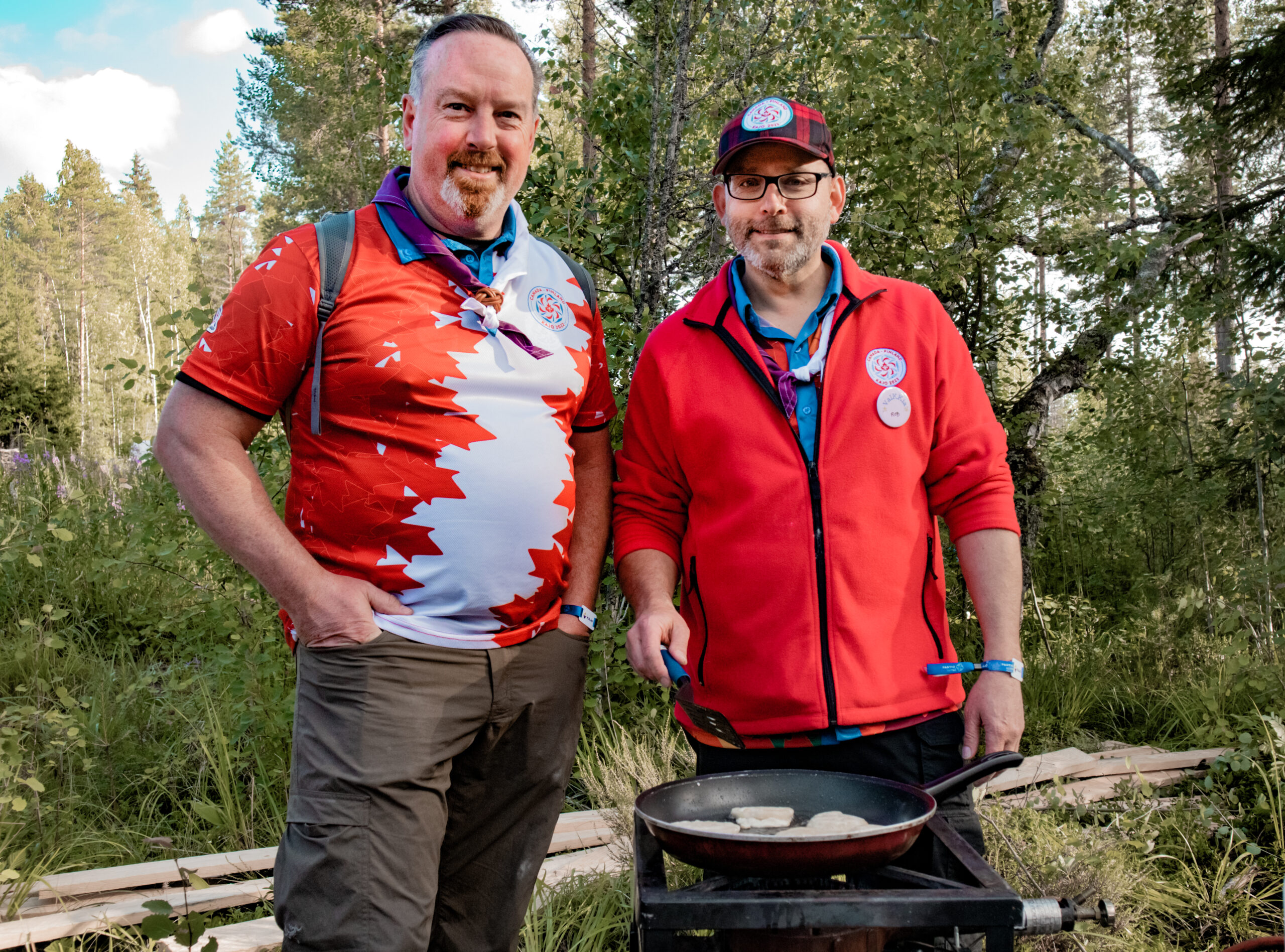On Sunday evening you could have a taste of different cultures and their habits in Culture Bash. With each camp unit organizing a game, serving a snack or teaching a new skill, the camp turned into a multicultural activity area for the evening, and everyone was welcome to visit the activities around the camp area and learn more about other cultures!
Bannocks and maple leaf tattoos
In Fotoni, a lovely smell of freshly baked bannock has gathered a big crowd around camp unit number 524. Bannock is a pan-fried, indigenous bread from Canada made of flour, salt, sugar and baking powder – rather simple but tasty recipe! Bannock is often served with either jam, butter, cream or berries, in the similar way pancakes are. It is not entirely sure where bannock originates from, but it’s been popular among the First Nation people for centuries. In fact, most indigenous families have their own unique recipes, passed down from generation to the next one.


In Hehku we find more Canadians, but instead of snacks we leave the camp unit with Canadian flag stickers on our ID cards and red maple leaves tattoos on our face. Canada surely is a well-presented nation on Kajo with over 200 Canadian scouts on the camp, and that can be seen!


Games from all around the globe
Quite a few of the Culture Bash activities are focused around traditional games. Wherever you look, you can spot a group of people playing. One of these games is the Thai game called Rere Khaoisan, a song game similar to London Bridge Is Falling Down. Two players hold hands and make an arch with their arms, and the rest of the players pass through this arch while singing a rhyme. When the song ends, the two players lower their arms and whoever gets locked in between their arms, is out of the game.
Whereas London Bridge song is about repairing a bridge, the lyrics on this Thai game are about the major Thai crops, rice, which tells a lot about the culture of Thailand. After all, the nation is one of the biggest rice exporters in the world with over 15 million rice farmers!

On the other side of the camp site the Germans are teaching the participants German games, including Fire and Shield, “Banana song game” and Rock-Paper-Scissors with cheering. The leader of the “banana song game” is singing a chant about the process of eating a banana, and the rest of the players try their best to repeat the German phrases. Like every other song game, this one also has movements for each sentence.


Norwegian language and campfire capes
In Jäkälä in Halo you could find a group of Norwegian scouts in their campfire capes. Every Norwegian Scouts group has their own design on the cape, with different colours and cuts. Some members of the group are wearing a black one, full with badges gotten from events, camps and achieving different levels of scouting skills.
The Norwegians teach the people interested in Norwegian language two sentences in Norwegian: “bidnetvåde” (drying cloth) and “Eg budlampå broki mi” (I spilled on my pants). These rather random phrases are chosen for a reason: it is the dialect of Leikanger in western Norway. Try saying these in any other part of Norway, and you might not be understood! For its size Norway has quite a few different dialects. This is partly because of the geography. The high mountains and deep fjords have kept the people seperated, and making it difficult for people from different areas to interact with each other. As a result, different populations have each developed their own way of speaking the language.

Dancing with the stars of Ireland and Finland
Walking down Halo you could hear laughter and music coming from the Komorebi camp unit. A lot of people have gathered together to learn Siege of Ennis, an Irish dance originating from the town of Ennis in County Clare. This fast-paced dance from the 1940s is danced in rows of four facing each other and consists of 4 parts: In and Out, Swapping, Star Formation and Crossing over.
After dancing for a while, the Finnish participants taught the Irish the traditional party dance of Finland: letkajenkka, aka letkis. In Letkis the dancers form in a line with their hands on the shoulders or waits of the person in front of them. The group “kicks” with their legs, and moves forward and back by hopping. In case you are not familiar with the dance yet, make sure to have a Finn teach it to you for the next party!


As unique as Culture Bash was, it surely won’t be your only chance to get international. The whole Kajo experience is filled with interactions with other cultures, and you can find more international folks and events all around the camp, especially from the International Lounge on the Main Street. Make sure to follow the Kajo channels and app so you won’t miss the next one!
Text and photos: Minja Lallukka






